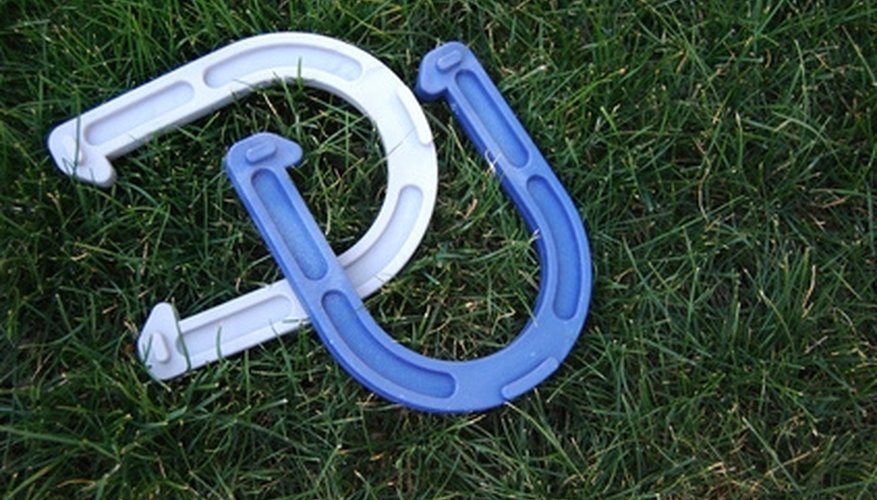
The game of horseshoes is governed by the rules of the National Horseshoe Pitcher’s Association (NHPA), but most backyard games are far more casual and more about fun than fierce competition and prizes. However, the game needs some basis for rules, and the ones most people use in their backyard horseshoe pit are a mixture of the official NHPA rules and adaptations for home play.
Set Up
The horseshoe pit for your backyard game doesn't need to be elaborate. The only requirements are two stakes and the horseshoes themselves. Most regularly used horseshoe pits have sand or another soft soil surrounding the stakes. This reduces bouncing and rolling of the shoes when they land, but it's not a requirement for playing horseshoes in your backyard.
To keep within the parameters of NHPA rules, the pit should be set up with the stakes 40 feet apart, and the end-to-end length of the court should be 46 feet. The playing area should be 6 feet wide, according to the Home Furnish website.
Scoring
Scoring is simple in horseshoes. There are two types of pitches that count for points: “ringers” and “leaners.” A ringer takes place when the pitched shoe encircles the stake on the opposite end of the pit.The shoe should encircle the stake to count as a ringer. Any shoe landing within 6 inches of the stake is considered a leaner. Ringers are worth 3 points and leaners are worth 1 point. No other pitches score. The player landing closest to the stake in that inning after pitching his 2 shoes gets the points for all shoes landing closer than his opponents. In other words, if you throw a ringer and a leaner, and your opponent pitches two leaners, you score 3 points for your ringer and 1 more point if your leaner is closer to the stake than either of your opponent's leaners. If your opponent’s leaner is closer than yours, they cancel each other out and you only get credit for your ringer. Games are usually played for a specific number of innings, with the highest scoring player at the end being declared the winner. You can also choose to play horseshoes to a specific point level. In most backyard games, players compete to reach 21 points.
Pitching
The NHPA specifies how players must deliver each shoe during a game. It's appropriate to use the same rules for backyard games.
According to NHPA rules as listed on the Sports Unlimited Inc. website, a player should pitch both horseshoes during her turn, one at a time, and then her opponent proceeds with his two pitches. The shoes are all pitched from within three feet of the stake, and both pitches should be completed within 30 seconds. Accidentally dropping a shoe during a turn does not constitute a pitch.
Players must pitch all horseshoes using the same arm throughout a game, unless an injury occurs that prevents a player from using that arm.
References
Writer Bio
Lee Morgan is a fiction writer and journalist. His writing has appeared for more than 15 years in many news publications including the "Tennesseean," the "Tampa Tribune," "West Hawaii Today," the "Honolulu Star Bulletin" and the "Dickson Herald," where he was sports editor. He holds a Bachelor of Science in mass communications from Middle Tennessee State University.



